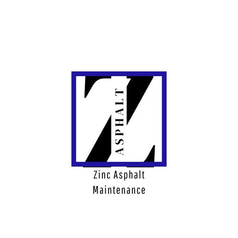Sealcoating Vs Paving
Is sealcoating the right option for you?
2/10/20242 min read


Sealcoating vs. Paving: Making the Right Decision for Your Driveway
Maintaining your driveway is an essential aspect of homeownership that often goes overlooked until significant issues arise. When faced with cracks, potholes, or general wear and tear, it's crucial to decide whether sealcoating or paving a new driveway is the best course of action. Each option serves a different purpose, and understanding when to apply each method can save you time, money, and headaches in the long run.
Sealcoating: Preserving the Integrity of Your Driveway
Sealcoating is a preventative measure designed to extend the life of your driveway by protecting it from the elements. Typically made from coal tar or asphalt emulsion, sealcoat creates a protective layer that shields the underlying pavement from water, UV rays, and other environmental factors that can cause deterioration.
So when is sealcoating the right choice?
Preventative Maintenance: If your driveway is relatively new and in good condition, sealcoating can help maintain its appearance and structural integrity. Applying sealcoat every few years can significantly extend the lifespan of your driveway, saving you the expense of premature replacement.
Minor Cracks and Surface Damage: Sealcoating is ideal for addressing minor cracks, surface oxidation, and other cosmetic imperfections. By filling in cracks, patching small potholes and sealing the surface, you can prevent water from infiltrating the pavement and causing further damage.
Cost-Effective Solution: Compared to repaving, sealcoating is a more affordable option that provides excellent value for money. It's a relatively quick and straightforward process that can be completed by professionals in a matter of hours, minimizing disruption to your daily routine.
Paving: When It's Time for a Fresh Start
While sealcoating can effectively prolong the life of your driveway, there comes a point when paving a new driveway becomes necessary. Paving involves removing the existing pavement and replacing it with a new base and surface layer, providing a long-lasting solution for severely damaged or deteriorated driveways.
Here are some signs that it's time to consider paving:
Extensive Structural Damage: If your driveway has extensive cracking, potholes, or sinking areas, sealcoating alone may not be sufficient to address the underlying issues. Paving allows for a complete overhaul of the driveway, addressing structural deficiencies and providing a durable surface that can withstand heavy use.
Aesthetic Concerns: While sealcoating can improve the appearance of your driveway, it may not be enough to achieve the desired aesthetic if the pavement is severely weathered or worn. Paving offers a fresh, uniform surface that can enhance the curb appeal of your property and increase its value.
Asphalt Lifespan: All asphalt will need to be repaved at some point. While proper maintenance of your pavement will help lengthen the lifespan of you driveway not all asphalt can be repaired. As a responsible company we will help guide you to the best decision possible for your situation.
Knowing when to sealcoat your driveway versus when to pave a new one requires careful consideration of the condition of the pavement, your budget, and your long-term maintenance goals. Sealcoating is an excellent option for preserving the integrity of relatively new driveways and addressing minor surface damage, while paving offers a more comprehensive solution for severely deteriorated pavement.
By assessing the extent of the damage and consulting with paving professionals, you can make an informed decision that ensures the longevity and aesthetic appeal of your driveway for years to come. Whether you opt for sealcoating or paving, investing in regular maintenance and upkeep is key to preserving the value and functionality of your property.
